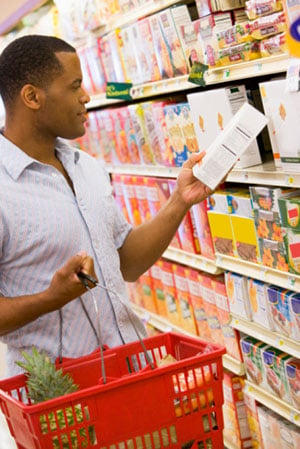 So you've developed a great food product and you want to get it out onto the market. But you're not just after any buyer. You want to dip into the pockets of the high-end buyer. And to do that, you need to design the right food packaging to attract them.
So you've developed a great food product and you want to get it out onto the market. But you're not just after any buyer. You want to dip into the pockets of the high-end buyer. And to do that, you need to design the right food packaging to attract them.
But food packaging design isn't something you should take lightly. It takes careful consideration, a proven designer and a solid marketing plan. You can’t just slap a logo on a wrapper or bag and put your items out on the shelf.
Your packaging needs to reflect your company's values.
What sort of food service are you providing? This will have as much bearing on your packaging design as will the end-user profile. After all, consumers tend to buy from sellers that they perceive to reflect their own values.
There are several design aspects you should be considering:
- Materials. What is the packaging made out of? What do the materials say about your company's values or about the product itself? Are you using recycled materials? Minimal packaging? Or do you need to use a lot of packaging to protect a particular shape or preserve food texture?
- Color scheme. What emotions or cultural cues do the package's colors convey? Black is traditionally associated with sophistication… but it's also associated with decay. White is thought of as "pure," but it can also mean "empty." Blue is a fairly safe color associated with loyalty, but it's also "cold," so probably a poor choice for a spicy product. A good conceptual designer can help you sort through the emotions and develop an appropriate scheme.
- Negative vs. positive space. How will you catch the consumer's eye and stand out among other products on the shelf? Too much cluttering imagery and your customer might be overwhelmed, or skip over your product entirely. Too little and you might fail to convey the right message.
- Logo. How does the logo convey your company's or the product's ethos? For that matter, do you need a logo to convey those values, or would a logo just distract from the overall brand messaging?
- Typography. Sleek and non-serif? Classic or stylistic? What do the letters and the way they're arranged say about your brand?
Some examples of effective food packaging.
Does your organization believe in promoting sustainable agriculture and organic farming methods? Then recycled materials and earth tones are probably going to go a long way toward attracting the buyers you covet. You'll probably want to go for the least amount of packaging possible— after all, the more packaging, the more waste your environmentally-conscious consumer would perceive. And nothing says "fresh" and "natural" like the color green, right?
A great example of this sort of aesthetic can be seen in Little Bug's line of organic baby food. The design of their pea and asparagus baby food package makes excellent use of green to convey the sense of nutrition and healthy living. There is plenty of negative space, so the design looks clean. And the box is made of bio-degradable, untreated, recycled cardboard.
Are you selling an imported, gourmet food product to high-income buyers and foodies? Check out this example of sophisticated packaging for the Paradise Gourmet Club's coffee line. There's nothing at all understated about this packaging. Each coffee comes from a different world region and each is in its own, enclosed metal canister.
There is a separate, designed logo conveying an indigenous motif for each region— playing to common Western ideas of the exotic. The coffees even come in a sturdy, clasped wooden box; it's heavy, it's authoritative. It exudes wealth, power and exclusivity.
Or is your product of artisanal and of limited supply? Take a look at the packaging for condiments, marmalades and oils sold by Arzak, the restaurant ranked 8th in the world by Fine Dining Lovers. This minimalist approach to packaging uses a subtle, two-tone color palette, sleek typography and delicate etchings of the animals or plants most associated with each food to convey the sense of true elegance and purity.
Know your buyer before you design.
Partner with a marketing group or consumer research firm to determine your target consumer's preferences. If you can afford to do so, conduct focus groups, too.
Once you've identified your audience's preferences, work with a conceptual designer to develop an overall branding scheme for your new product lines. A conceptual designer is somewhat different from a production designer— he or she will be concerned more with translating your brand or product into communicable ideas that a production designer would then incorporate into your food product's packaging.
The production designer will then work with your packaging materials supplier, printer and manufacturing line personnel to ensure that your branding will not only make it onto the package, but stand out on the food aisle shelves.







